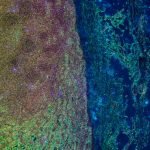Elegance in Pain Management
Tom Grodski, ND
Elegance – the attribute of being unusually effective and simple
As NDs, we have a vast array of options available when it comes to treatment, and pain management is no exception. Included in our tool box are western and oriental botanicals – both oral and topical, homeopathy, acupuncture, electro-acupuncture, auricular therapy, trigger point therapy with injectables, Bowen therapy, craniosacral therapy, strengthening exercises, anti-inflammatories, anti-inflammatory dietary changes, prolotherapy, apitherapy and so forth.
With such choices available, either self-styled arbitrariness can rule or an ideal of elegance. It is unfortunate that within the profession, I feel that elegance has remained for the most part a virtue of our elders. After all, it is the reward of years of clinical experience bred in experimentation, the seeming wisdom of knowing what works and when, that follows years of trial and error. One might say that clinical experience is in a way a right of passage – an apprenticeship with the medicine and the modalities. One is left on his or her own following graduation to delve into the depths of the modalities and, in a way, reinvent the wheel. At some point, the experimentation develops a life of its own, a rhyme and reason, and from that point eclecticism is born. But in the end, one might ask whether this is necessary or even advantageous. To be sure, the answer is no.
Standards of Practice
In terms of developing such elegance through the most common avenue of post-educational training, as a profession we have neither the tradition of apprenticeship found in traditional natural medicine nor the residency programs available in conventional medicine. There is, however, another means of passing on the knowledge and elegance of practical experience – standardization. Standards of practice allow for both the development of a treatment methodology based on collective clinical experience as well as a reference from which comparisons can be made regarding treatment modalities and specifics. In turn, improvements in efficacy and efficiency can evolve. And, despite arguments to the contrary, standards are compatible with individualized treatment. Insofar as diagnoses are valid and consistently proven to be treated effectively using particular modalities, individualization remains the subject of the specifics of those modalities used (i.e., the remedy, point selection, botanical formula).
A case in point is the painful acute presentation of childhood otitis media, which is easily diagnosed following a physical exam and clinical history. Treatment-wise, finding and abstaining from the offending food allergens and strengthening the Spleen-Pancreas (digestive) Qi are long-term approaches found to be very effective in clinical nutrition and Chinese medicine, correspondingly. Though useful in addressing the root cause of the infection, they are, however, ineffective in the acute presentation and treatment. Homeopathy, in contrast, works marvelously – oftentimes quickly enough to assess the particular remedy’s accuracy and effectiveness – and is cost-effective to boot. Acupuncture would unnecessarily cause further distress to the child, and therefore would not be appropriate.
Thus, one can appreciate the possibility in cases as this, for a standard: Diagnosis-wise, there is a straightforward conventional diagnosis, as well as a Chinese diagnosis and a homeopathic profile. The etiology can be described naturopathically and via Chinese medicine. Treatment-wise, as pain and the infection are clinical realities, these need to be addressed quickly via appropriate modalities – in this case, with homeopathy, and possibly botanicals, or nutraceuticals. Long term, to decrease susceptibility and prevalence, dietary changes need to be addressed, and possible reinforcement via botanicals/nutraceuticals may also be appropriate, case dependent. And so, there are many aspects of such a case where the treatment can be standardized, while also individualizing how each modality is used – the particular homeopathic remedy or the particular dietary, botanical or nutraceutical treatment.
In summary, standardization of practice remains necessary in establishing the ideal of elegance in the naturopathic profession, for it is through standardization that the collective knowledge and experience, not to mention the practical wisdom of our elders, can be disseminated and passed down to future generations.
Principles of Practice
Creating a foundation for such standardization, however, requires that certain assumptions be made. Though the principles of naturopathic medicine outline a definition of what constitutes naturopathic medicine, they suggest little in regard to the details of treatment heuristics. Such assumptions include that the naturopathic approach to diagnosis is standardized, and that naturopathic treatment at minimum is standardized via the modalities used.
More importantly to our present discussion, however, is the assumption that the choice of treatment modality follows a standardized hierarchical set of goals, here described as principles of practice:
- Effectiveness in attaining one’s primary treatment goal; i.e., cure of the causative root factor leading to pain or, if not possible, pain reduction/improvement or management.
- Cross-effectiveness in covering other treatment goals (secondary/other complaints). In this case, we are assuming that the pain condition is the primary focus – oftentimes it is not or, where it may be for the individual, as holistically minded NDs, our own focus is on the underlying condition that is either causing or aggravating the pain.
- Cost-effectiveness. For example, auricular acupuncture with magnetic pellets or semi-permanent pins might be more elegant than a series of acupuncture treatments if it is effective in attaining the same goal, but not if it only helps marginally; i.e., if a series of acupuncture treatments might permanently eliminate the pain.
- Individual appropriateness. This refers to circumstances such as in the earlier example regarding acupuncture and kids. Sometimes the patient or the circumstances call for using (or not using) certain modalities. This can relate to belief systems, fears and other psychological aspects that inevitably affect the doctor-patient interaction, the perceived benefit from the treatment (enhancing or negating the placebo effect) and compliance.
Having set up such theoretical principles of practice, the next issue is to organize the qualifying treatment options according to practical considerations, such as clinical experience, clinical studies, research and the input of elders.
To begin such a discussion, it often helps to begin somewhere (anywhere) for reference. In that spirit, I offer these principles I have standardized in my own practice regarding the treatment of pain:
- Conduct a shortened homeopathic/TCM clinical intake to establish the general presentation – prescribe an appropriate remedy and patent Chinese formula. (While possibly taking longer to reduce the pain quotient for the patient, the Chinese patent will act much more effectively in reducing the causative factor – i.e., blood stasis, qi stagnation, phlegm, etc. – in comparison to simply a natural anti-inflammatory.)
- Following the homeopathic intake, if a remedy presents itself immediately, it is often possible to dose the patient at that point during the visit prior to further interaction, allowing for an acute trial of the remedy for compatibility; if confirmation arrives by rapid, considerable improvement in subjective pain, there is little need for further treatment. Otherwise, it allows for appropriate changes to be made to the remedy prior to completion of the session.
- In-office treatment: Making use of auricular pins is often very effective in immediately reducing the amount of pain experienced and treating the various neurological holding patterns that may be playing a part in maintaining the chronic pain. Auricular therapy also provides patients a means to treat themselves over the course of the next week which, assuming that the placement of the pins was initially successful and brought some relief, will be significantly reassuring to the patient, will help them relax more and will assure compliance. Auricular treatment also replaces any immediate need for acupuncture visits, which can increase costs significantly.
- Following the auricular treatment, if necessary and if time allows, the practitioner can make use of a few acupuncture points using approaches found particularly effective in acute presentations. This can further open the channels or help get some movement if the pain is caused by the typical scenarios of blood, qi or phlegm stagnation.
- Identify and introduce any strengthening exercises or stretches that may be necessary as homework.
- Recommend an appropriate diet (i.e., anti-inflammatory) – discussed and outlined on a handout.
- On future visits: Make changes as necessary to the homeopathic remedy and Chinese patent formula; assess effectiveness of auricular treatment; and address remaining obstacles to cure. One might add in Bowen therapy, bio-injectables, acupuncture or electro-acupuncture as needed.
The eclecticism and breadth of such an approach often leads to satisfying, rapid results for patients, as it offers different means and levels of treatment.
To end, it should be said that in terms of elegance, the manner in which the two principles of effectiveness and simplicity are achieved and balanced seems to be relative to the condition and dependent on the desired outcome. When dealing with pain, the priority lies in effectiveness at the cost of simplicity. Obviously, in cases that are less acute or painful, simplicity is more easily balanced. Standardization would allow for a means to balance both of these principles through critical analysis and clinical research.
 Tom Grodski, ND is a CCNM graduate who is currently in private practice at the Peace Arch Family Health Clinic in White Rock, BC. His main interests lie in family medicine, as well as with complicated and stubborn chronic illnesses, with a focus on addressing individuals’ unique stress response. His practice is eclectic, and regularly makes use of homeopathy, Chinese medicine (acupuncture and botanicals), auricular therapy, bowen-craniosacral, sanum, EAV and counseling.
Tom Grodski, ND is a CCNM graduate who is currently in private practice at the Peace Arch Family Health Clinic in White Rock, BC. His main interests lie in family medicine, as well as with complicated and stubborn chronic illnesses, with a focus on addressing individuals’ unique stress response. His practice is eclectic, and regularly makes use of homeopathy, Chinese medicine (acupuncture and botanicals), auricular therapy, bowen-craniosacral, sanum, EAV and counseling.








